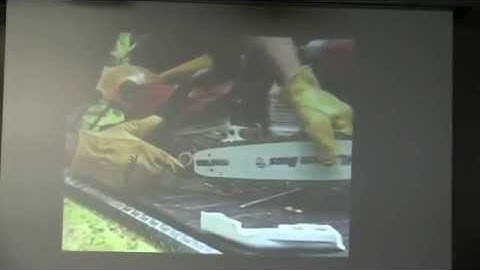If you're seeing this message, it means we're having trouble loading external resources on our website. If you're behind a web filter, please make sure that the domains *.kastatic.org and *.kasandbox.org are unblocked. Please provide any 2 values and click "Calculate" to get the other values in the ohm's law equations V = I × R and P = V × I.
Ohm's LawOhm's Law states that the current through a conductor between two points is directly proportional to the voltage. This is true for many materials, over a wide range of voltages and currents, and the resistance and conductance of electronic components made from these materials remain constant. Ohm's Law is true for circuits that contain only resistive elements (no capacitors or inductors), regardless of whether the driving voltage or current is constant (DC) or time-varying (AC). It can be expressed using a number of equations, usually all three together, as shown below. Where: V is voltage in Volts R is resistance in Ohms I is current in Amperes Electrical PowerPower is the rate at which electrical energy is transferred by an electric circuit per unit time typically expressed in the SI (International System of Units) unit of Watts. Power is typically produced by electric generators and supplied to businesses and homes through the electric power industry, but can also be supplied by electric batteries or other sources. In resistive circuits, Joule's Law can be combined with Ohm's Law to produce alternative expressions for the amount of power dissipated, as shown below.
Where: P is power in Watts Ohm's Law Formula WheelBelow is a formula wheel for Ohm's Law relationships between P, I, V, and R. This is essentially what the calculator does, and is just a representation of the algebraic manipulation of the equations above. To use the wheel, choose the variable to solve for in the middle of the wheel, then use the relationship for the two known variables within the cross section of the circle.  Use Omni's power dissipation calculator to determine the power dissipated in series and parallel resistor circuits. Just enter the applied voltage and the resistances of the resistors. The calculator will calculate the equivalent resistance of the circuit, total current through the circuit, and the power dissipated by the resistors. Continue reading to know what power dissipation is and the formula to calculate the power dissipated by resistors. You will also find an example of how to find the power dissipated in a circuit.
According to Ohm's law, when an electric current passes through a resistor, a voltage drop occurs across its end. This means that some electric potential energy is lost when the electric charge moves from one end of the resistor to the other. This potential energy is converted to heat, and we call this conversion (or loss) dissipation. Thus, power dissipation is the loss of electric potential energy (per unit time) in the form of heat by an electrical device when a current flows through it. Although power dissipation is an undesirable effect, there are instances where this phenomenon is of great use, for example, in electric heaters.
To calculate the power P dissipated by a resistor R when a current I passes though it, we will use Joule's law of heating: P = I2 * RWe can also substitute Ohm's law into the above equation to get: P = V * I…or: P = V2 / RYou can use any of the three formulas mentioned above to calculate the power dissipated by resistors. The power dissipated by a resistor appears in the form of heat, i.e., the resistor gets heated when current flows through it. The maximum power that a resistor can dissipate without burning is called the power rating of a resistor.
In a series circuit (see figure 1), the circuit's total resistance (or equivalent resistance) is the sum of the individual resistances. Req = R1 + R2 + ... + RnIf we connect a voltage source V, to this circuit, the same current I will flow sequentially through all the resistors. We can calculate the total current in a series circuit using Ohm's law: I = V / Req Fig. 1: A series combination of resistors. (Source: wikimedia.org)The power dissipated by each resistor is: P1 = I2 * R1, P2 = I2 * R2, ......,Pn = I2 * Rn The total power dissipated by the circuit is: P = P1 + P2 + .... + PnP = I2 * Req ...and the total power supplied by the voltage source (e.g., a battery) is: P = I * V
Let us consider a circuit consisting of parallel combination of resistors, R1, R2, ....., Rn (see figure 2). We can determine the total resistance in a parallel circuit using the formula: 1 / Req = 1 / R1 + 1 / R2 + ..... + 1 / Rn If we connect a voltage source V across this combination, the total current in a parallel circuit is: I = V / Req Fig. 2: A parallel combination of resistors. (Source: wikimedia.org)In parallel combination of resistors, the voltage drop across each resistor is the same. Hence we can calculate the power dissipation across each resistor as: P1 = V2 / R1, P2 = V2 / R2, ...., Pn = V2 / Rn The total power dissipated by the circuit is: P = P1 + P2 + .... + PnP = V2 / Req
Let us see how to calculate power dissipation in a series circuit using the power dissipation calculator. We will consider a circuit consisting of three resistors connected in series across a battery with a voltage output of 12.0 V. Let the three resistors be R1 = 2 Ω, R2 = 6 Ω, and R3 = 1 Ω.
You can also use this calculator just to calculate the total current in a parallel circuit or a series circuit.
To find the power dissipated in a series circuit, follow the given instructions:
To find the power dissipated in a parallel circuit, follow these steps:
A parallel circuit dissipates more power than a series circuit. For the same set of resistors, the total resistance of the parallel circuit is always lower than the total resistance in a series circuit. Since the power dissipated in a circuit is inversely proportional to the resistance of the circuit for a constant voltage source, a parallel connection will dissipate more power than a series circuit.
In a series circuit, the highest value resistor dissipates the most power. This is because the same current sequentially flows through each resistor in a series connection, and the power dissipated is directly proportional to the resistance. In a parallel connection, the power dissipated is inversely proportional to the resistance, as the voltage drop is the same across each resistor. Hence, the lowest value resistor dissipates the most power.
To determine the heat dissipation from power consumption, multiply the power consumed (in watts) by the time (in seconds) for which the current flows.
To calculate the power rating of any electrical appliance, use the given steps:
Do you know that we call power consumed by resistors the active power and power consumed by inductors or capacitors the reactive power? Read more about active and reactive power on our three phase calculator. |

Pos Terkait
Periklanan
BERITA TERKINI
Toplist Popular
#2
Top 9 ibc container 600 liter gebraucht 2022
1 years ago#3
#4
Top 6 dji mavic air 2 wann welcher filter 2022
1 years ago#5
Top 7 rosen schwarze flecken am stiel 2022
1 years ago#6
#7
Top 6 em nome do pai em nome do filho 2022
1 years ago#8
Top 8 zdf neben der spur -- erlöse mich 2022
1 years ago#9
Top 8 como melhorar dor no calcanhar 2022
1 years ago#10
Top 7 vinho é bom para pressão alta 2022
1 years agoPeriklanan
Terpopuler
Periklanan
Tentang Kami
Dukungan

Copyright © 2024 ketajaman Inc.


















